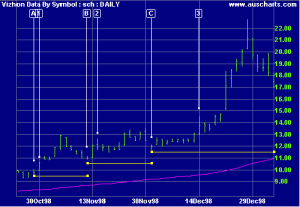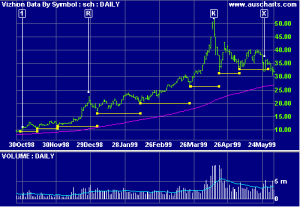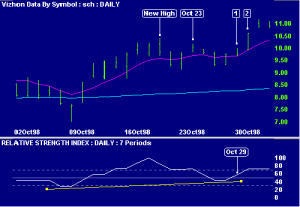Trading the Short-term Trend
Never trade against the trend – a fundamental principle in technical analysis. That’s easy enough to follow, but how do you determine the trend? There are as many techniques as there are days in the year, ranging from the original Dow Theory, through to highly complex Fourier wave analysis.
A reliable approach to measuring the intermediate trends is to combine the signals of the MACD and Slow Stochastic indicators. Introduced by Joe Duffy in Futures magazine, the technique has the advantage of simplicity and eliminates trader discretion – a fatal flaw in many trading systems.
Duffy sets the MACD at 30-10-10 (compared to the standard 26-12-9 days) and combines this with a 20-day Slow Stochastic. The combination of the two indicators increases reliability.
Trading Signals
Long positions:
Look for buy signals when both the MACD and Slow Stochastic are above their signal lines.
Do not take signals if one of the indicators has crossed to below its’ signal line.
Exit when both indicators cross to below their signal lines.
For short positions, reverse the process:
Look for sell signals when both the MACD and Slow Stochastic are below their signal lines.
Do not take signals if one of the indicators is above its’ signal line.
Exit when both indicators cross to above their signal lines.
Example
The Australian All Ordinaries is charted with a 21-day exponential moving average, 30-10-10-day MACD and 20-3-3-day Slow Stochastic, with signal lines.
The MACD and Slow Stochastic are both above their signal lines. Take new long positions.
MACD and Slow Stochastic have both crossed to below their signal lines. Exit all long positions.
Buy and sell signals should be entered using a short-term Momentum Indicator and Trailing stops.
Views – 183





Recent Comments